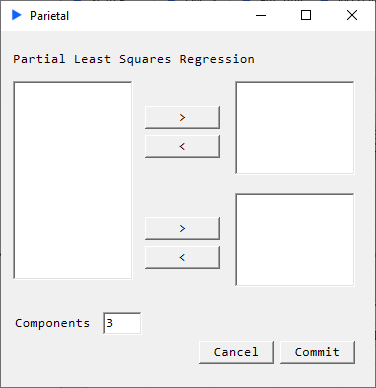Partial Least Squares Regression
PLSR is used to find relationships between two matrices and is primarily used for predictive purposes. More generally, it is a technique that reduces a set of variables to a smaller (user specified) set of orthogonal components and performs least squares regression on these components. The model produces a 'percentage variance explained' metric for each of the components in both the matrices which can give the analyst information regarding how many components to specify.

Description
The model in PLSR can be described as:
We use nonlinear iterative partial least squares (NIPALS) to solve the PLSR model.
The PLSR routine will center the variables before carrying out the core computation.
Returns
The relationships between the returned variables are described below.
- X Loadings:
- Y Loadings:
- X Scores
- Y Scores
- Beta:
- % Var: Row 1 containes the percentage variance explained in X by each component. Same for row 2 for Y.
- Weights:
- T2: Hotelling t-squared statistic as a generalization of Student’s t-statistic for
- X Residuals:
- Y Residuals: